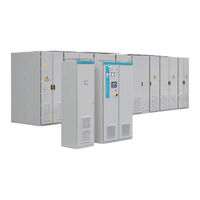Siemens 6SL38502UM114PA0Z Manuals
Manuals and User Guides for Siemens 6SL38502UM114PA0Z. We have 1 Siemens 6SL38502UM114PA0Z manual available for free PDF download: Operating Instructions & Installation Instructions
Siemens 6SL38502UM114PA0Z Operating Instructions & Installation Instructions (146 pages)
Medium-Voltage Drive
Table of Contents
Advertisement
Advertisement
